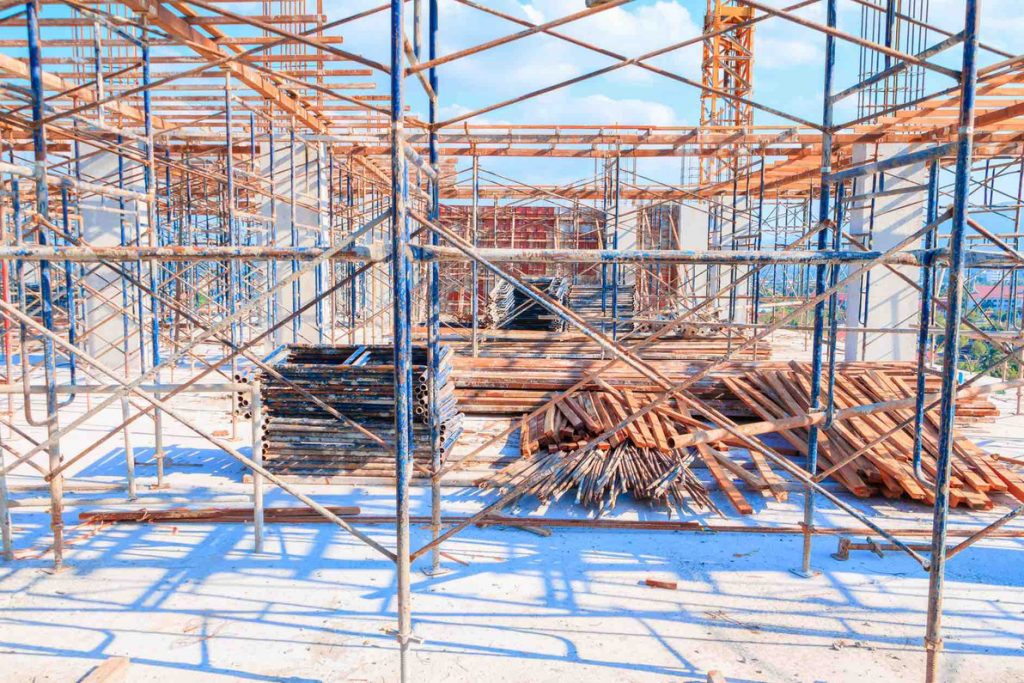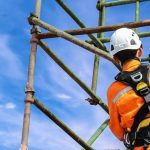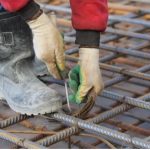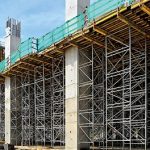Choosing the right scaffolding for construction affects safety, speed, and cost on-site. The wrong setup can delay progress, increase risk, or restrict access. Each project comes with unique needs, and understanding these clearly helps in making informed decisions. Use these eight tips to pick the best scaffold for your next project.
Understand the Project Requirements
Every project begins with planning. Look at the site’s height, shape, and size before choosing scaffolding. Some builds involve simple flat walls, while others include sharp corners or unusual angles.
To choose wisely:
- Study the shape and height of the structure
- Think about access points and tight corners
- Factor in space restrictions on-site
Making sense of these details early helps you avoid overbuying or choosing the wrong type. A well-studied plan helps reduce unexpected delays and increases the efficiency of the team from day one.
Check Load Capacity
All scaffolding for construction carries weight. Tools, workers, and materials pile up quickly during work. Choosing the right load capacity ensures stability and protects people on-site.
Before choosing, make sure to:
- Calculate the total weight of tools and materials
- Include the number of workers on the platform
- Choose a scaffold that supports slightly more than the maximum weight
This helps prevent bending, shaking, or sudden collapse, which may happen with overloaded setups.
Choose Between Fixed and Mobile Types
Scaffolds come in fixed and mobile designs. Some need anchoring. Others roll between work areas. Each suits different tasks.
To guide your choice:
- Use fixed scaffolds for tall or high-rise jobs
- Pick mobile ones for wide, flat spaces
- Think about surface level and wind exposure
Choose based on how much movement your project requires and the ground stability. Changing positions frequently will benefit from mobile types.
Inspect the Site Surface
Not all surfaces hold scaffolds well. Slopes, soft ground, and wet areas cause frames to tilt or sink. Check your foundation before placing any structure.
To improve scaffold stability:
- Scan the ground for slopes or dips
- Use base jacks or steel plates to spread the load
- Adjust for uneven surfaces before starting work
Safe bases keep the entire system steady and upright throughout the project.
Pick the Right Material
Scaffolds usually come in aluminium or steel. Some materials are lighter. Others carry more weight. Material choice changes how you move and work with the scaffold.
Make the best choice by:
- Picking aluminium for lighter, portable needs
- Choosing steel for stronger support in high-stress areas
- Considering wind and weather conditions on-site
Each material supports different needs, so avoid choosing based on convenience alone. Matching the material to the work environment can improve safety and durability.
Consider Modular Scaffolding
Some projects include curves, angles, or uneven levels. In these cases, modular scaffolding works better. You can connect its parts into different shapes, making it suitable for tricky layouts.
Modular systems improve flexibility by allowing you to:
- Adjust lengths and heights with ease
- Snap parts together based on design needs
- Build stable shapes without extra custom tools
This approach helps speed up work and keeps movement efficient on-site. It also lets you scale the setup depending on complexity.
Check Local Rules and Permits
Singapore and many other countries regulate scaffold use. Before setting anything up, know what laws apply to your site.
Avoid trouble by checking:
- Permit needs for public or tall structures
- Height limits for workers on platforms
- Inspection rules and schedule requirements
Even if you rent through sewa scaffolding services, you must still follow local laws fully. Laws may vary slightly depending on project type or region, so always confirm before proceeding.
Plan for Assembly and Dismantling
Set-up and take-down stages matter just as much as the use phase. Poor planning here creates delays or leads to worker injuries.
For smoother handling:
- Assign trained crew for both setup and removal
- Use clear instructions and layout plans
- Follow a logical sequence to avoid confusion
This planning keeps workers safe and saves time during both early and final stages. Efficient assembly prevents errors and limits downtime.
A Quick Comparison of Scaffold Types
To help decide faster, use this table to compare common types based on strength, use, and setup complexity. A summary of key differences makes scaffold selection clearer.
| Scaffold Type | Best For | Strengths |
| Tubular Scaffolding (GI Pipe) | General construction, industrial and commercial projects | Corrosion-resistant (galvanised)- Versatile |
| Metal Frame Scaffolding | Fast-setup projects, residential and commercial facades | Safe working platforms- Stackable frames |
| Hollow Section Scaffolding | Custom structures, tight or irregular spaces | Good for design flexibility |
| Wire Mesh (BRC) Scaffolding | Worker safety, facade work, public access areas | Enhances site safety |
| C60 Scaffolding & Shoring Systems | High-load applications like bridges or high-rise buildings | High load capacity- Ideal for concrete formwork |
| Reconditioned Scaffolding | Budget-friendly, short-term or small projects | Environmentally sustainable- Readily available |
When choosing between these, match the type to the task instead of going with what’s familiar.
Don’t Overlook Safety Features
Safety keeps your team working and your project moving. It isn’t optional — it’s essential. Every scaffold must include protection that stops slips and falls.
Before work starts, make sure to:
- Install strong guardrails on all open edges
- Use toe boards to block falling tools
- Check all locks and connections daily
A scaffold that starts safely must stay safe throughout the entire job. Frequent checks reduce the risk of surprise failures.
Think Long-Term Use
Scaffolds cost time and effort. Choose a system that supports not just this job, but future ones too. Flexible systems handle more projects and save money later.
To make a long-term choice:
- Choose structures you can adjust later
- Select materials that resist rust and wear
- Store parts carefully after each project
Reusable building scaffolding builds value across many projects and saves setup time. Consider whether the system can handle multiple project types.
Final Thoughts
Picking the best scaffolding for construction means planning with care and thinking ahead. You protect your team and build with confidence when you choose well.
Start with your project’s shape, site surface, and required load. Follow safety rules. Use quality materials. Choose smart systems — whether fixed, mobile, or modular scaffolding — that match your exact task.
Even if you work with temporary setups like sewa scaffolding, thoughtful selection makes the difference. Strong scaffolds don’t just hold workers — they carry your whole project forward.
FAQs
The three main types are supported scaffolds, suspended scaffolds, and mobile scaffolds, each serving different construction needs.
The best type depends on the project, but supported scaffolds are often preferred for stability, versatility, and safety.
Consider project height, weight requirements, site conditions, and mobility needs before selecting the appropriate scaffold system.
SWL means Safe Working Load, the maximum weight scaffolding can safely carry, including workers, tools, and materials.








